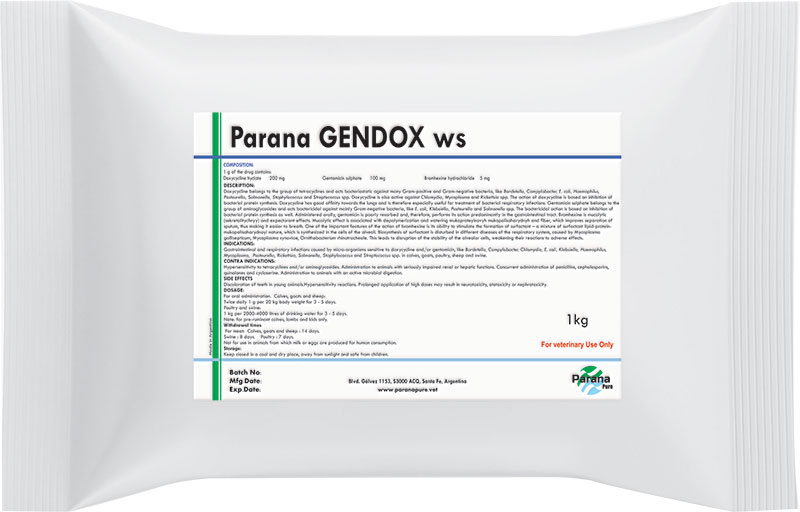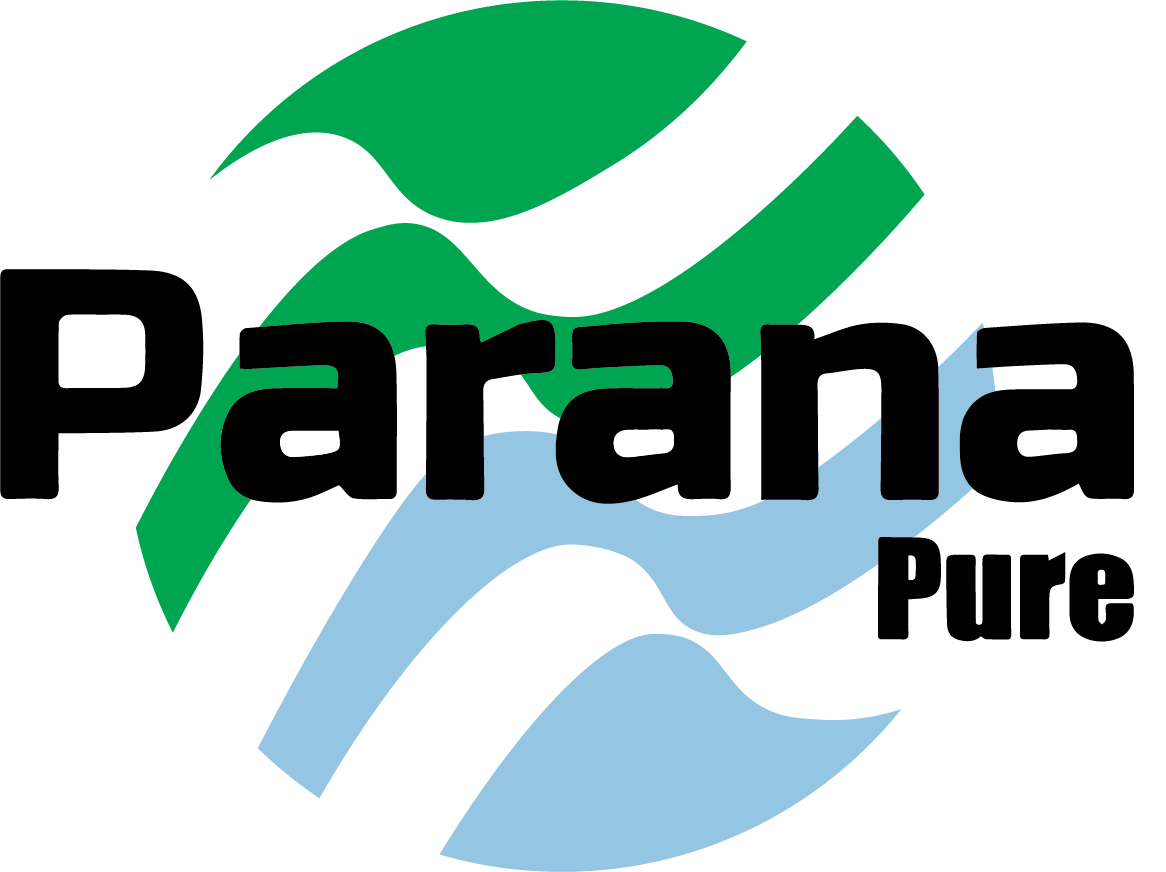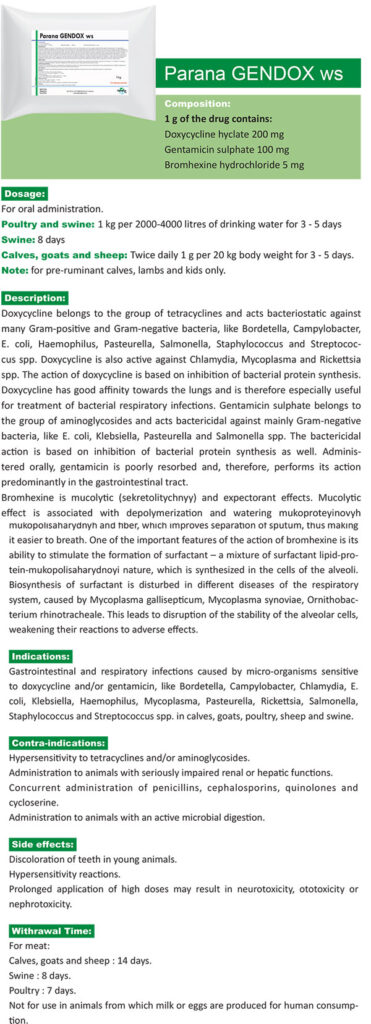
Parana GENDOX ws
1 g of the drug contains:
Doxycycline hyclate 200 mg
Gentamicin sulphate 100 mg
Bromhexine hydrochloride 5 mg
Dosage:
For oral administration.
Poultry and swine: 1 kg per 2000-4000 litres of drinking water for 3 – 5 days
Swine: 8 days
Calves, goats and sheep: Twice daily 1 g per 20 kg body weight for 3 – 5 days.
Note: for pre-ruminant calves, lambs and kids only
Description:
Doxycycline belongs to the group of tetracyclines and acts bacteriostatic against
many Gram-positive and Gram-negative bacteria, like Bordetella, Campylobacter,
E. coli, Haemophilus, Pasteurella, Salmonella, Staphylococcus and Streptococcus spp. Doxycycline is also active against Chlamydia, Mycoplasma and Rickettsia
spp. The action of doxycycline is based on inhibition of bacterial protein synthesis.
Doxycycline has good affinity towards the lungs and is therefore especially useful
for treatment of bacterial respiratory infections. Gentamicin sulphate belongs to
the group of aminoglycosides and acts bactericidal against mainly Gram-negative
bacteria, like E. coli, Klebsiella, Pasteurella and Salmonella spp. The bactericidal
action is based on inhibition of bacterial protein synthesis as well. Administered orally, gentamicin is poorly resorbed and, therefore, performs its action
predominantly in the gastrointestinal tract.
Bromhexine is mucolytic (sekretolitychnyy) and expectorant effects. Mucolytic
effect is associated with depolymerization and watering mukoproteyinovyh
mukopolisaharydnyh and fiber, which improves separation of sputum, thus making
it easier to breath. One of the important features of the action of bromhexine is its
ability to stimulate the formation of surfactant – a mixture of surfactant lipid-protein-mukopolisaharydnoyi nature, which is synthesized in the cells of the alveoli.
Biosynthesis of surfactant is disturbed in different diseases of the respiratory
system, caused by Mycoplasma gallisepticum, Mycoplasma synoviae, Ornithobacterium rhinotracheale. This leads to disruption of the stability of the alveolar cells,
weakening their reactions to adverse effects.
Indications:
Gastrointestinal and respiratory infections caused by micro-organisms sensitive
to doxycycline and/or gentamicin, like Bordetella, Campylobacter, Chlamydia, E.
coli, Klebsiella, Haemophilus, Mycoplasma, Pasteurella, Rickettsia, Salmonella,
Staphylococcus and Streptococcus spp. in calves, goats, poultry, sheep and swine
Contra indications:
Hypersensitivity to tetracyclines and/or aminoglycosides.
Administration to animals with seriously impaired renal or hepatic functions.
Concurrent administration of penicillins, cephalosporins, quinolones and
cycloserine.
Administration to animals with an active microbial digestion.
Side effects:
Discoloration of teeth in young animals.
Hypersensitivity reactions.
Prolonged application of high doses may result in neurotoxicity, ototoxicity or
nephrotoxicity.
Withdrawal times:
For meat:
Calves, goats and sheep : 14 days.
Swine : 8 days.
Poultry : 7 days.
Not for use in animals from which milk or eggs are produced for human consumption

